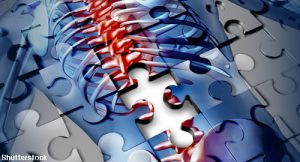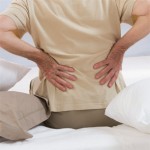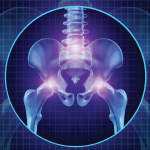 For one of the most prevalent chronic conditions and leading causes of disability in the U.S., a low-risk, low-cost treatment option may offer people relief from debilitating symptoms. A Michigan study found patients with chronic low back pain who self-administered acupressure had less pain and fatigue associated with their chronic pain.1
For one of the most prevalent chronic conditions and leading causes of disability in the U.S., a low-risk, low-cost treatment option may offer people relief from debilitating symptoms. A Michigan study found patients with chronic low back pain who self-administered acupressure had less pain and fatigue associated with their chronic pain.1
“We found people with chronic low back pain who performed one of two types of acupressure [i.e., stimulating or relaxing] for six weeks reported improved symptoms,” says study lead author Susan L. Murphy, ScD, OTR, associate professor, Department of Physical Medicine & Rehabilitation, University of Michigan, and research health science specialist at the VA Ann Arbor Health Care System, Geriatric Research Education and Clinical Center.
Acupressure involves using a finger, thumb or device to place pressure on specific points on the body to stimulate or relax energy centers associated with healing. Based on traditional Chinese medicine, the technique manipulates vital energy, called Qi, circulating through channels or meridians in the body. The idea is that an imbalance in these channels can cause disease or problems. Manipulating these channels with pressure (or needles in the case of acupuncture) at specific acupoints activates the energy pathways and removes obstructions that block energy flow, relieving pain by improving circulation and nutrition.2,3
Data show the benefits of acupressure for pain associated with cancer or osteoarthritis, but few data are available on the potential benefits for people with chronic low back pain.4,5 A systematic review and meta-analysis of the efficacy of using auricular acupressure for chronic low back pain (i.e., stimulating the external surface of the ear) found a significant effect in improving pain within 12 weeks of treatment, but with no significant effect on disability level.3
To narrow that gap, Dr. Murphy and colleagues conducted a randomized controlled pilot trial to assess the efficacy of acupressure to reduce two common symptoms experienced by people with chronic low back pain: fatigue and sleep problems.
The Study
According to Dr. Murphy, a main reason the team examined acupressure instead of acupuncture was because they were interested in interventions patients can do themselves. “Self-administered acupressure has little to no side effects and is very safe for people to try without healthcare provider monitoring,” she says.
The study included 67 patients with chronic low back pain, defined as nonspecific or low back pain persisting for at least three months, and having at least mild fatigue. All patients were 18 years or older and were on a stable medication regimen for two months prior to the study.


